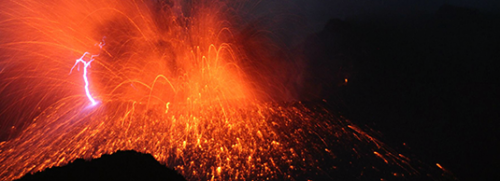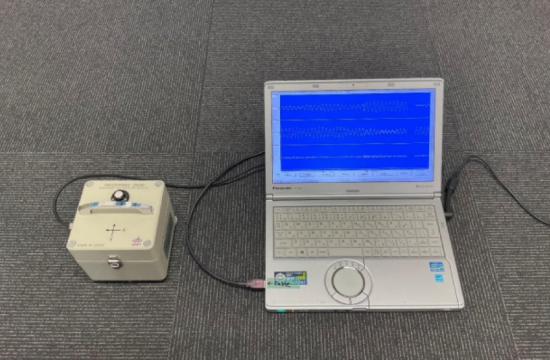At the height of the First World War, in the trenches, German physicist Heinrich Barkhausen was eavesdropping on Allied telephone conversations. Every now and again, the Allied communications were drowned out by some strange sounds. The soldiers dubbed them “whistlers” because they sounded similar to shells flying overhead.

Barkhausen concluded that these whistler waves were caused by an atmospheric phenomenon but the true source was not identified until the 1950s, when scientists eventually found that whistlers are produced by bolts of lightning thousands of kilometres away. Once created, these electromagnetic waves are channelled around the world via ducts in the plasmasphere (a region also known as the inner magnetosphere).
In the July 2015 issue of Physics World, a special issue on weird natural phenomena, Ian Randall, a science writer based in New Zealand, investigates how researchers are studying whistler waves triggered by volcanic lightning to elucidate the structure of the Earth’s plasmasphere, which will eventually help scientists get better at anticipating the impact of space weather events.
Lightning creates bursts of very-low-frequency radio waves – known as atmospherics, or “sferics” for short – and these electromagnetic waves sometimes penetrate the ionosphere and make it into the plasmasphere, where the sferics whizz between hemispheres through ducts of plasma where they become whistler waves.
The passage of whistlers between the hemispheres provides a rare opportunity to investigate the plasmasphere without the need to launch expensive space probes. Better understanding of this near-Earth region of space can help scientists get better at anticipating the impact of space weather events that can endanger astronauts and disrupt both orbiting and ground-based electronic systems.
To elucidate the structure of the plasmasphere, researchers need to feed in a few factors to their model such as the whistler’s frequency. The problem is that they also need to know where each whistler enters and leaves the plasmaspheric duct and it is usually impossible to pinpoint the location of a lightning bolt that caused a particular whistler wave – because the original sferic can travel thousands of kilometres before entering a duct.
However, a recording station in Dunedin on New Zealand’s South Island provides a unique opportunity: its magnetic conjugate point lies in the Aleutian Islands, a volcanic chain of more than 40 volcanoes in the northern Pacific Ocean.
Like regular lightning, volcanic lightning neutralizes the charge build-up that develops from the generation and separation of charges. Karen Aplin, an atmospheric physicist from the University of Oxford, explains: “Once charge has been generated in a volcanic plume, it is separated by convection, carrying smaller particles upwards, whereas heavier – and often oppositely charged – particles settle under gravity.”
Researchers looked at correlations between whistler data in this area and lightning data from prominent, high latitude volcanic eruptions in the Aleutian chain and found the first evidence that volcanoes are able to couple with the inner magnetosphere.
Commenting on this novel discovery, Claire Antel, a physicist from the University of Cape Town in South Africa says: “The improved knowledge of whistler paths increases the fidelity of the plasmaspheric model that makes use of whistler data.”
Although this whistler study was very much Earth-based, Mark Golkowski, a plasma-physics expert from the University of Colorado Denver, believes that it has ramifications beyond our planet. “The volcanic-whistler findings support proposed studies to use dust-storm lightning on Mars to probe the weak plasma densities of the planet’s upper atmosphere”, he says.








